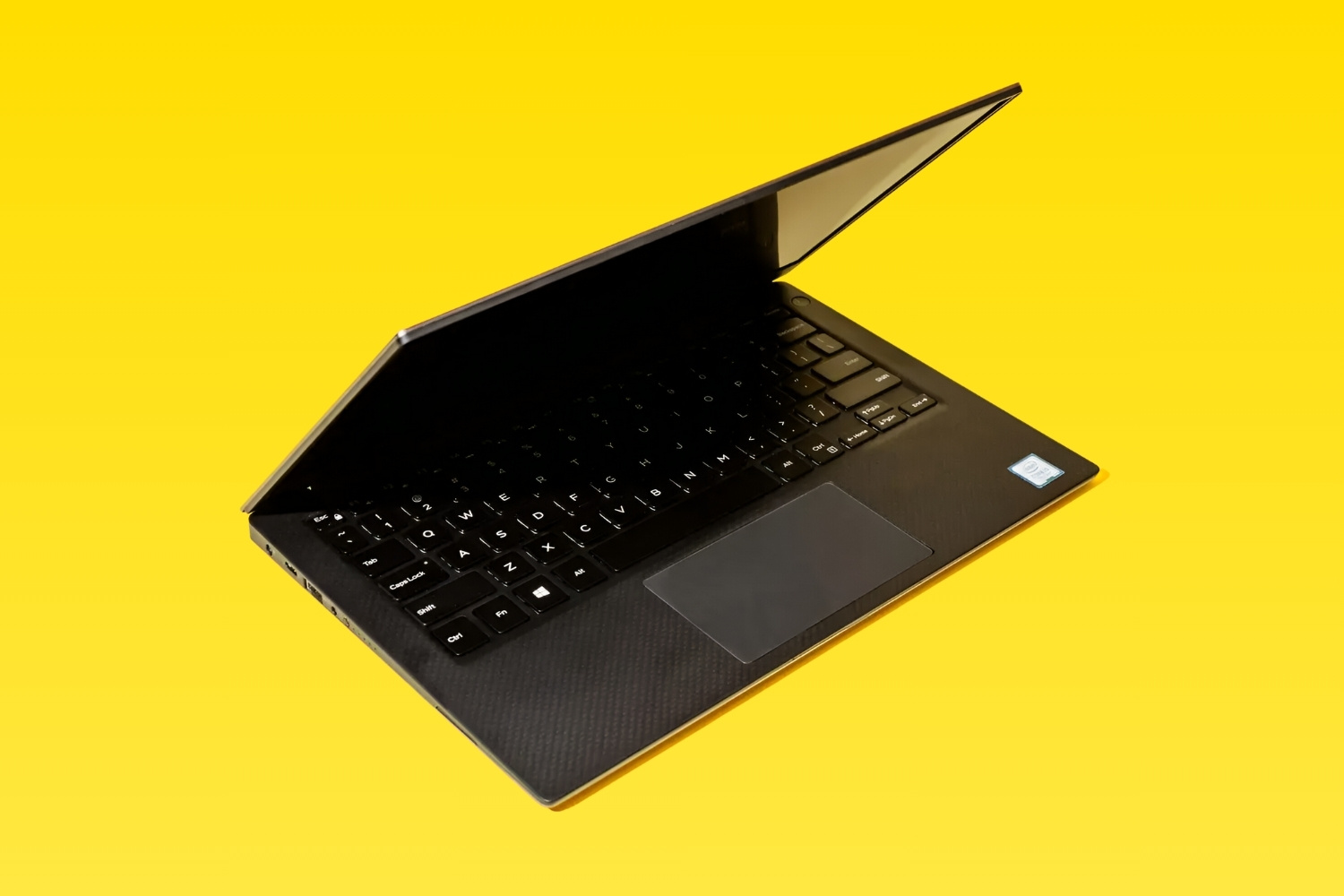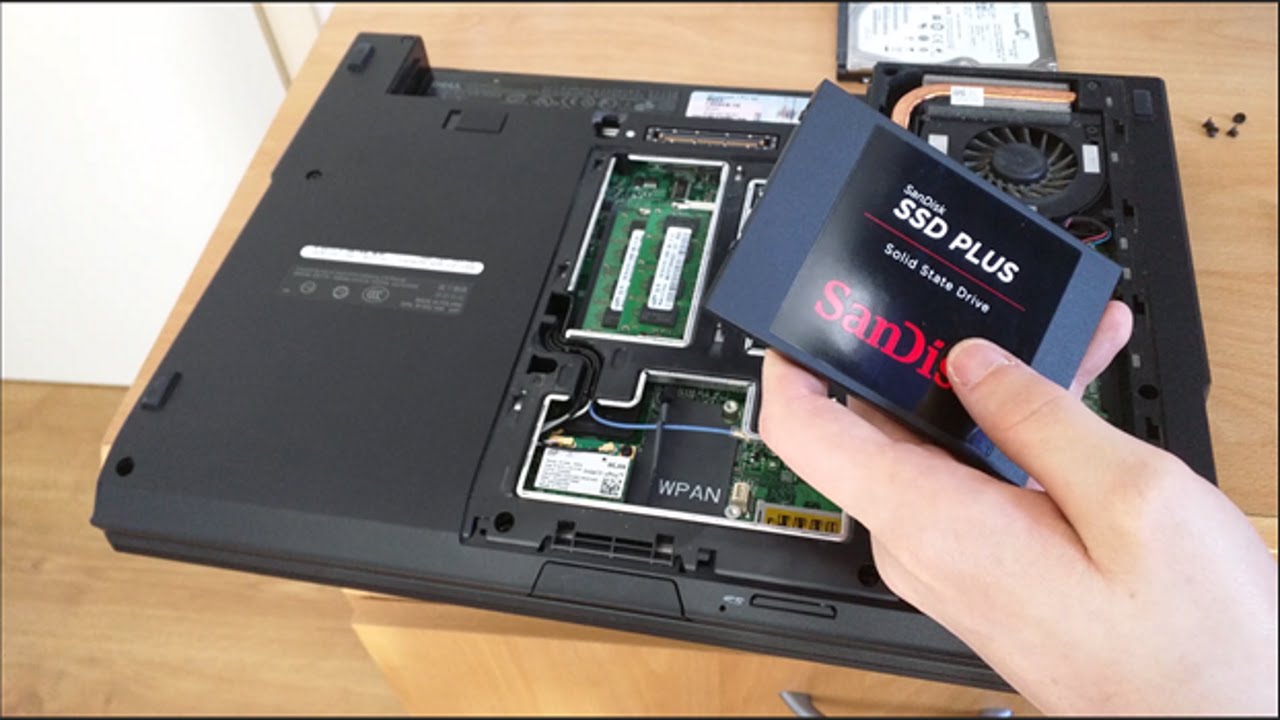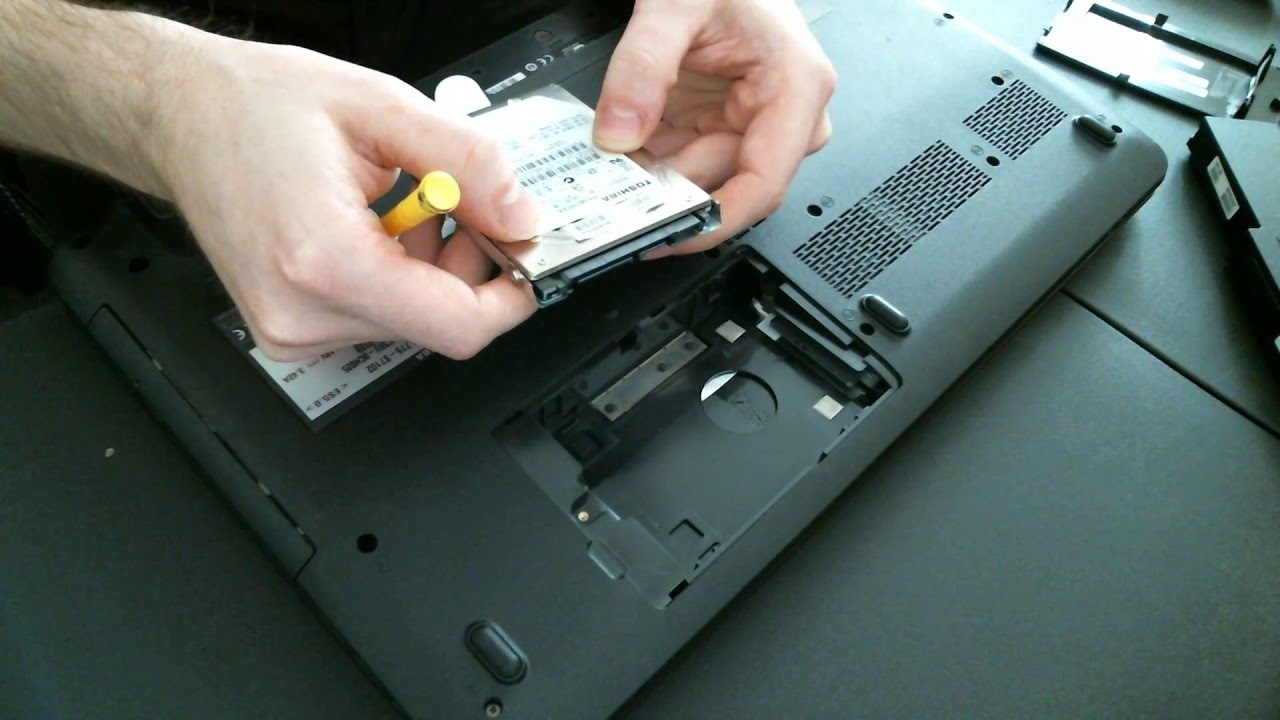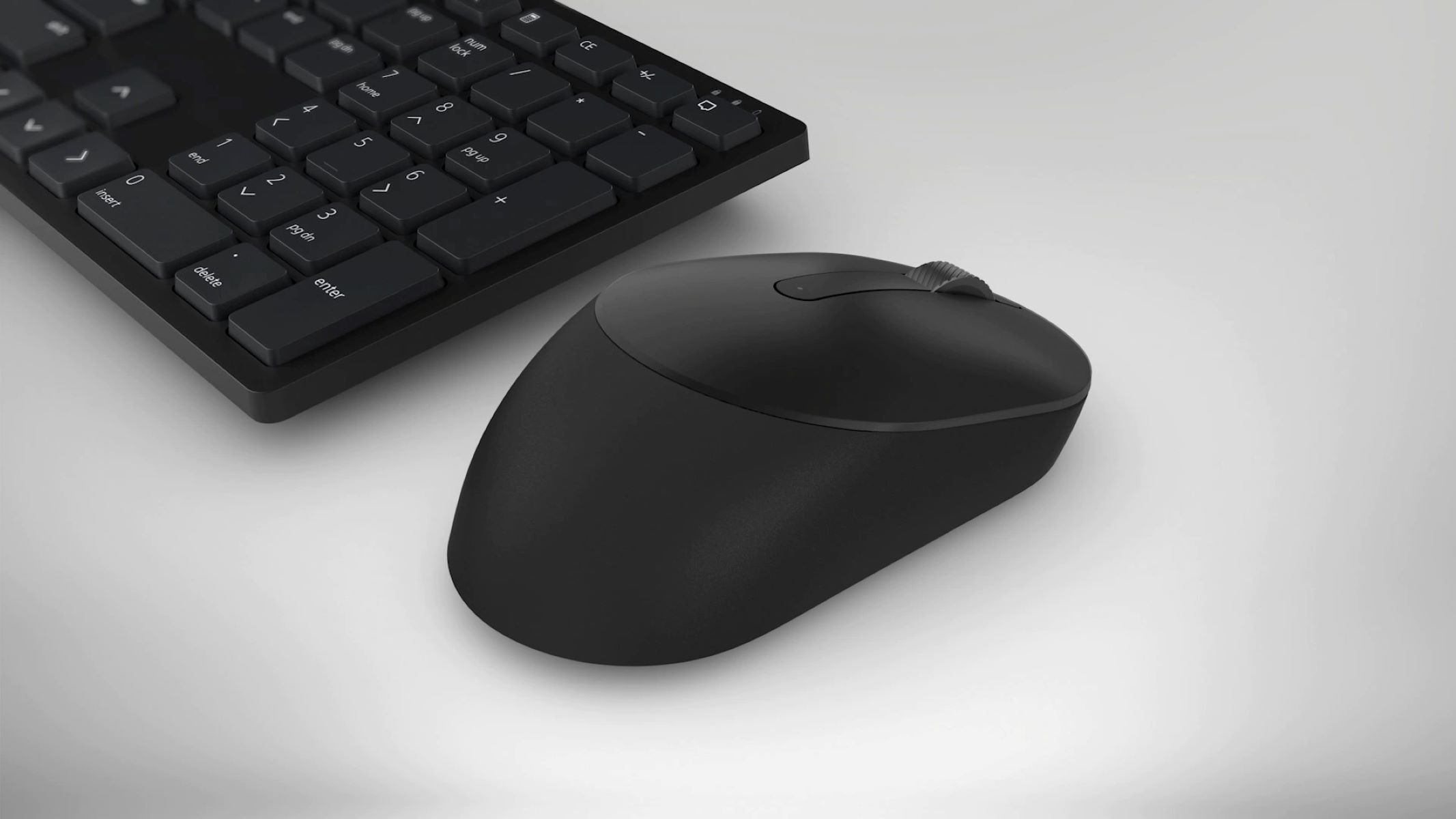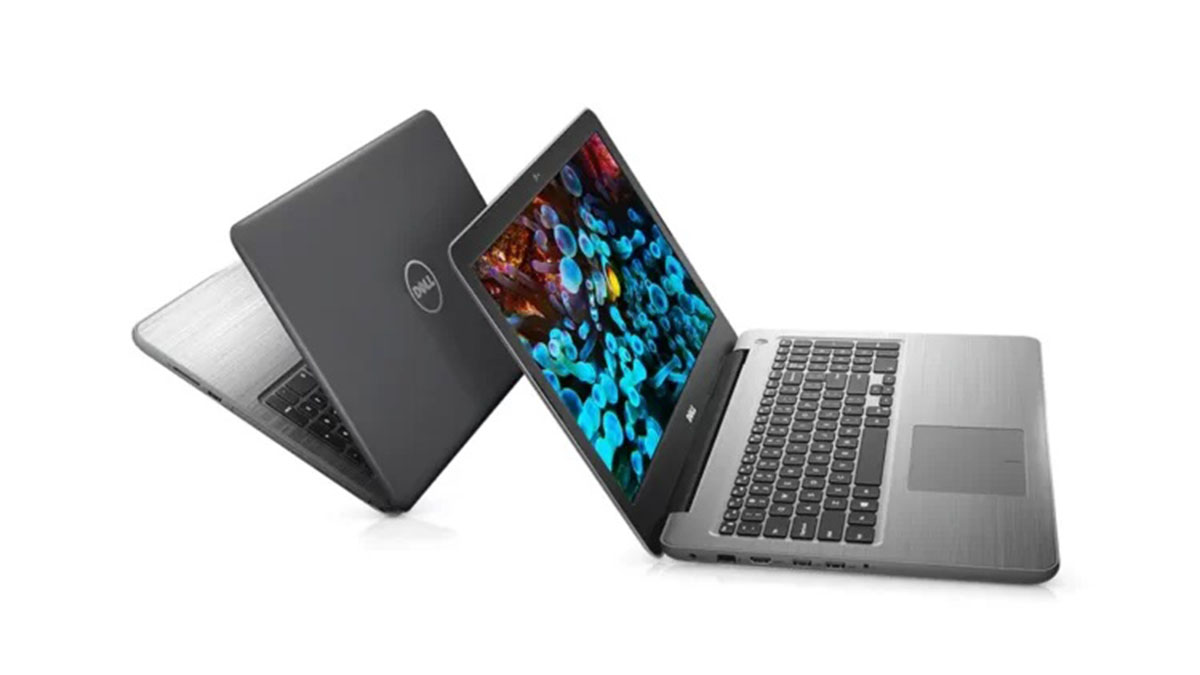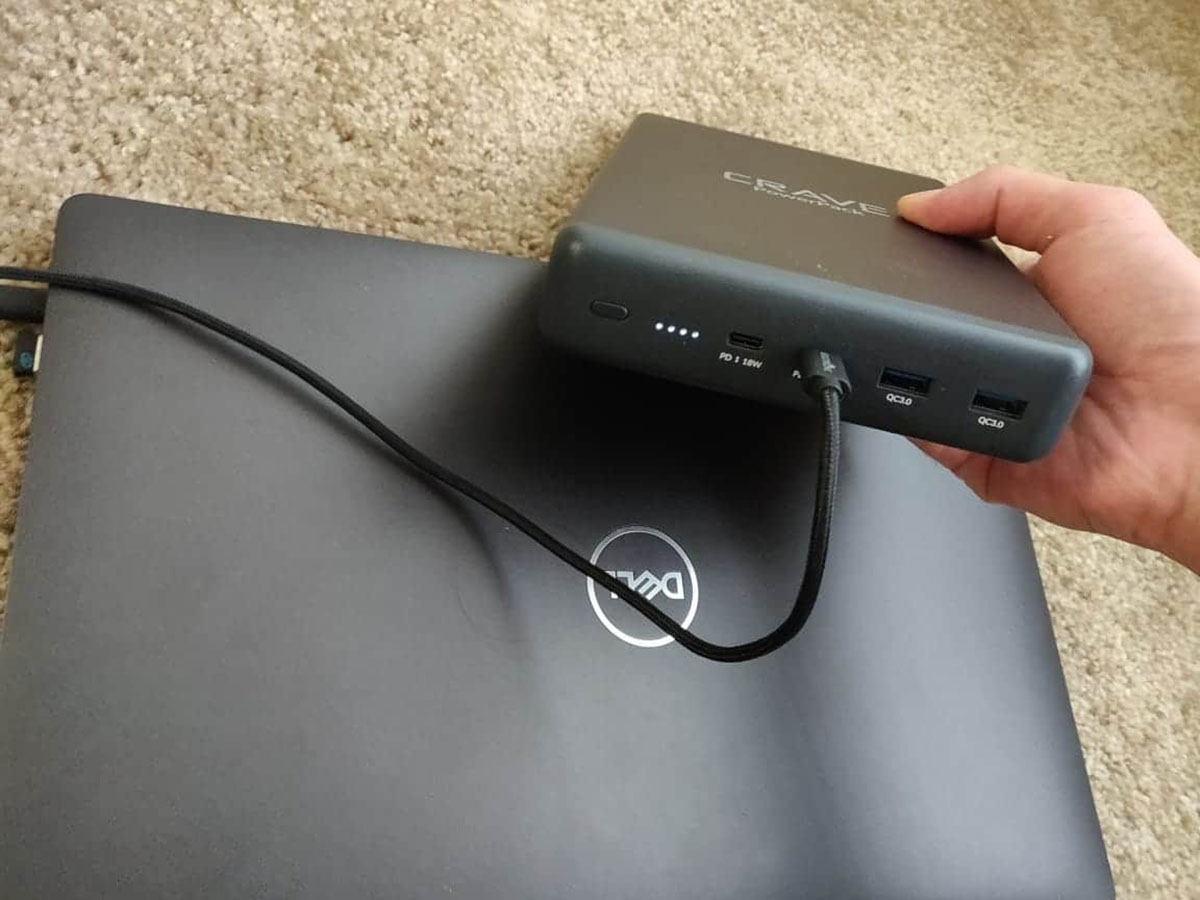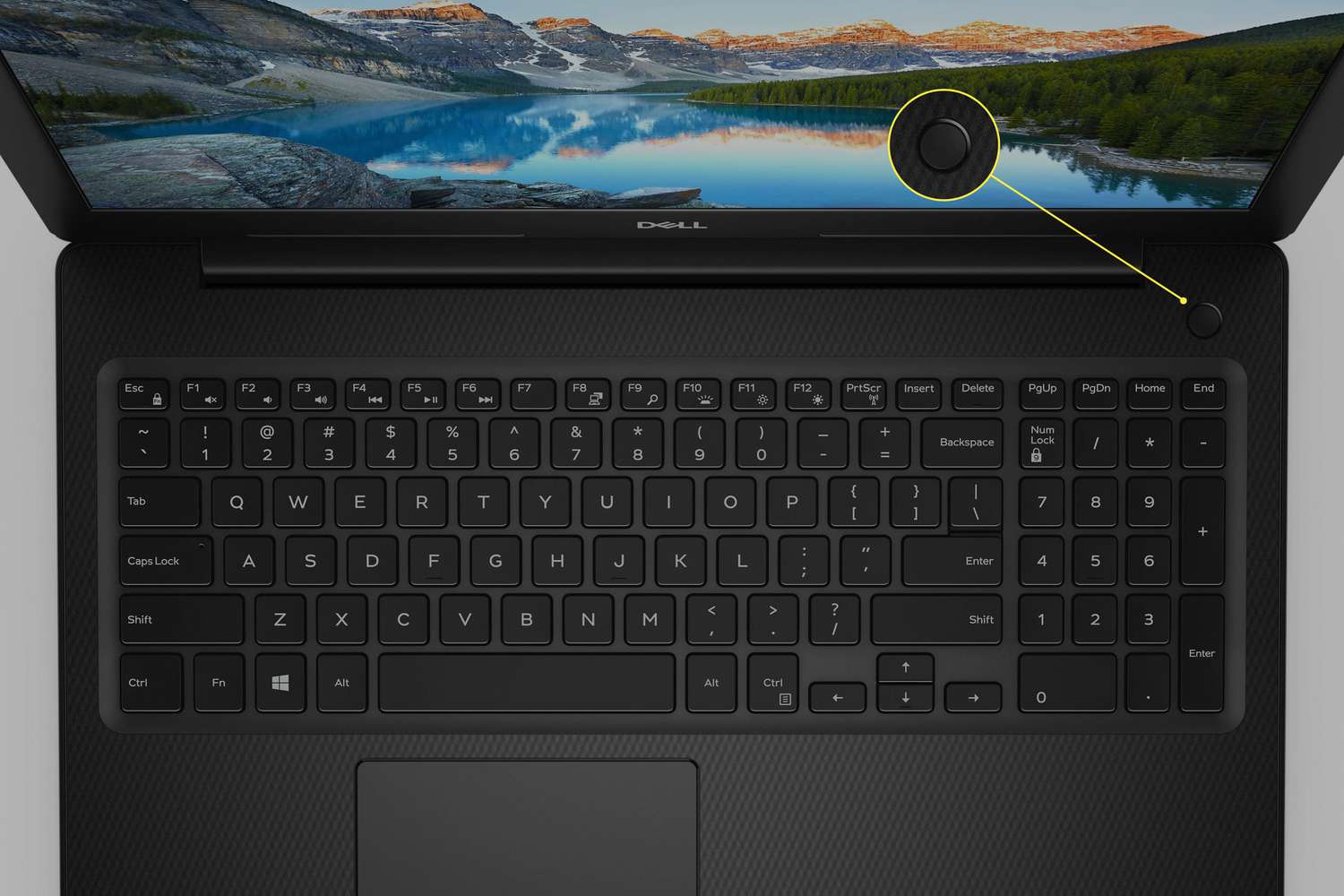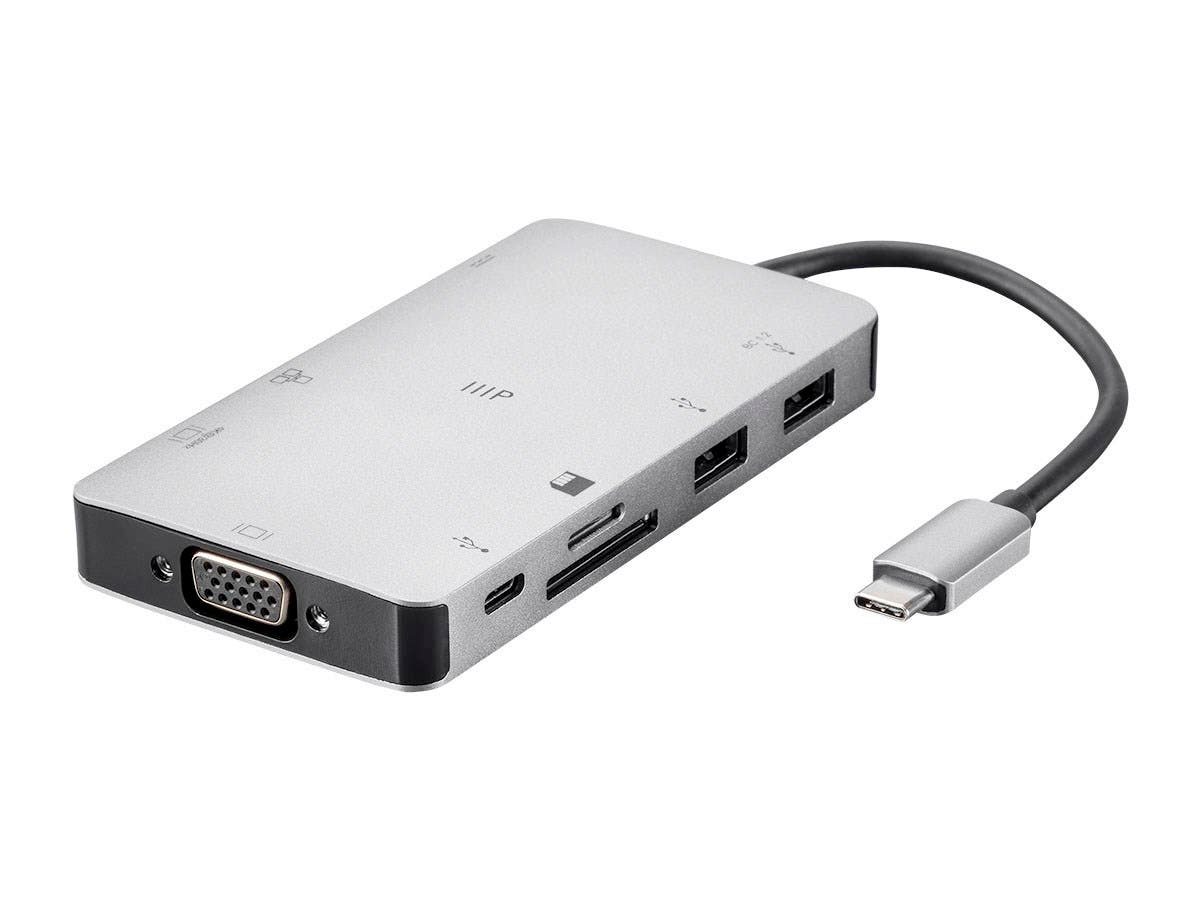Introduction
Welcome to our troubleshooting guide for Dell laptops that won’t turn on, even when they are plugged in. Dealing with a laptop that refuses to power up can be frustrating, especially when you rely on it for work or personal use. Fortunately, there are several common causes for this issue, and many times, it can be resolved without the need for professional assistance.
In this guide, we will explore the potential reasons why your Dell laptop isn’t turning on and provide troubleshooting steps to help you get your device up and running again. It is important to note that while some of the solutions may be applicable to other laptop brands, this guide specifically focuses on Dell laptops.
Before we delve into the troubleshooting steps, it’s essential to emphasize the importance of proper power connection and the role it plays in resolving this issue. Many times, a seemingly malfunctioning laptop can be attributed to simple power-related problems, such as loose connections or faulty adapters. So, let’s begin by ensuring that everything is wired correctly and functioning as it should.
But first, let’s examine a few reasons why your Dell laptop might refuse to turn on. These common causes include power connection issues, battery problems, software or operating system glitches, hardware failures, and even overheating. By understanding these potential factors, you’ll be able to narrow down the cause and apply the appropriate troubleshooting steps to solve the problem.
Common Causes of Dell Laptop Not Turning On
When your Dell laptop fails to power on, there can be various reasons behind this frustrating issue. By familiarizing yourself with these common causes, you can narrow down the possibilities and find the right solution. Here are some of the common reasons why your Dell laptop may not be turning on:
- Power Connection Issues: One of the most common causes is a faulty power connection. Ensure that the power adapter is securely plugged into both the laptop and the electrical outlet. A loose connection can prevent your laptop from receiving power, even when it’s plugged in.
- Battery Problems: If your laptop is not turning on, the battery could be the culprit. Remove the battery and try powering on your laptop using only the AC adapter. If it turns on without the battery, then the battery may need to be replaced.
- Software or Operating System Glitches: In some cases, software or operating system issues can prevent your Dell laptop from turning on. These can range from corrupted system files to conflicts with recently installed programs. Try performing a hard reset or booting into safe mode to isolate the issue.
- Hardware Failures: Faulty hardware components, such as a malfunctioning motherboard, faulty power button, or a damaged charging port, can prevent your Dell laptop from powering on. If you suspect a hardware problem, it may be best to seek professional assistance for diagnosis and repair.
- Overheating: Excessive heat can cause your laptop to shut down and refuse to turn on. Dell laptops, like any other electronic device, have built-in thermal protection mechanisms that shut down the system when temperatures become too high. Ensure that the vents are not obstructed and use a cooling pad if necessary.
These are just a few of the common causes for a Dell laptop not turning on. By understanding these possibilities, you can narrow down the issue and proceed with the appropriate troubleshooting steps. Now that we have identified some potential causes, let’s move on to the troubleshooting steps that can help you get your Dell laptop up and running again.
Troubleshooting Steps for Dell Laptop Not Turning On
If your Dell laptop is not turning on, there are several troubleshooting steps you can take to identify and resolve the issue. Follow these steps in order to narrow down the problem and find a solution:
- Check the Power Connection: Ensure that the power adapter is securely connected to both the laptop and the electrical outlet. If there are any loose connections, try reconnecting them. If you have a spare power adapter, try using it to rule out a faulty adapter.
- Remove the Battery: If your laptop has a removable battery, remove it and try powering on the laptop using only the AC adapter. If it turns on without the battery, the battery may be causing the issue and may need to be replaced.
- Perform a Hard Reset: Sometimes, a hard reset can help resolve power-related issues. To do this, disconnect the AC adapter and remove the battery (if applicable). Press and hold the power button for 15-20 seconds. Then, reconnect the AC adapter (without the battery) and try turning on the laptop.
- Boot into Safe Mode: If your laptop powers on but fails to fully start, try booting into Safe Mode. This allows your laptop to start with only essential system programs and drivers, bypassing any potential software conflicts. To access Safe Mode, press the F8 key repeatedly as soon as you power on the laptop and choose the Safe Mode option.
- Check for Display Issues: If you hear the laptop powering on but the screen remains blank, it could be a display-related issue. Connect an external monitor to your Dell laptop and see if you get a display. If you do, it may indicate a problem with the laptop’s internal display or graphics card.
- Reset BIOS Settings: Resetting the BIOS settings to their default configuration can help resolve certain hardware-related issues. To do this, restart your laptop and press the appropriate key (such as F2 or Del) to enter the BIOS setup. Look for the option to restore default settings or load default values, and save the changes before exiting the BIOS.
- Check for Overheating: Overheating can cause your laptop to shut down and refuse to turn on. Ensure that the vents are clear of dust and debris. Consider using a cooling pad to keep the laptop’s temperature in check. If the laptop overheats frequently, it may be necessary to clean the internal cooling system or replace a faulty fan.
By following these troubleshooting steps, you can often identify and resolve the issue causing your Dell laptop to not turn on. However, if none of these steps work or if you suspect a hardware failure, it is recommended to seek professional assistance for further diagnosis and repair.
Ensuring Proper Power Connection
One of the first things to check when your Dell laptop won’t turn on is the power connection. A faulty or loose power connection can prevent your laptop from receiving power, even if it’s plugged in. To ensure a proper power connection, follow these steps:
- Check the Power Adapter: Inspect the power adapter for any visible damage, such as frayed wires or bent pins. If you notice any issues, replace the power adapter with a compatible one from Dell or a reputable manufacturer.
- Securely Connect the Power Adapter: Make sure the power adapter is securely plugged into the laptop’s power port and into a functioning electrical outlet. Ensure that there are no loose connections. If the adapter feels loose, try using a different outlet or plug to see if it makes a difference.
- Verify the AC Wall Socket: If the laptop still doesn’t turn on, verify that the electrical outlet is working correctly. Try plugging in another device, such as a lamp or phone charger, to confirm that the outlet has power.
- Remove and Reattach the Battery: If your laptop has a removable battery, carefully remove it and then reinsert it. This can help establish a stronger connection between the battery and the laptop, potentially resolving any power-related issues.
Once you have checked and ensured a proper power connection, attempt to turn on your Dell laptop. If it still doesn’t power on, proceed to the next troubleshooting step to further isolate the issue.
Note that if you are using a Dell laptop model that supports USB-C charging, you may also check the USB-C cable and the power source to ensure they are functioning correctly. Try using a different USB-C cable or power adapter to see if it resolves the problem. Additionally, if your Dell laptop has a charging port, inspect it for any damage or debris and clean it if necessary.
By ensuring a reliable power connection, you can eliminate power-related issues as the cause of your Dell laptop not turning on. However, if the problem persists, there may be other factors at play, such as battery problems, software issues, or hardware failures, which will be addressed in the following sections.
Checking Battery Issues
If your Dell laptop is not turning on, the battery could be the culprit. Battery-related issues can prevent your laptop from powering on, even when it’s connected to a power source. To check for battery issues and troubleshoot them, follow these steps:
- Inspect the Battery: Examine the battery for any visible damage, such as swelling, leakage, or a burnt smell. If you notice any of these signs, the battery may be faulty and should be replaced.
- Remove and Reinsert the Battery: If your laptop has a removable battery, carefully remove it and then reinsert it. Sometimes, the battery can become loose, causing power connectivity issues. Reattaching it securely can help establish a proper connection.
- Perform a Battery Reset: Some Dell laptops have a battery reset feature that can help resolve certain battery-related issues. To perform a battery reset, first, ensure that your laptop is powered off and disconnected from any power source. Then, press and hold the power button for about 15 seconds. Afterward, release the power button and try turning on your laptop.
- Test the Laptop without the Battery: If your laptop has a removable battery, try removing it and powering on the laptop using only the AC adapter. If the laptop turns on without the battery, it may indicate a problem with the battery itself. In such cases, consider replacing the battery.
- Check Battery Health: Dell laptops often come with pre-installed software that allows you to check the health and status of your laptop’s battery. Use the Dell Power Manager or the Dell SupportAssist application to assess the battery’s health and see if it requires replacement.
It’s worth noting that if your Dell laptop uses a non-removable battery, such as in certain ultrabook models, you won’t be able to perform some of the above steps. In such cases, reach out to Dell support or a qualified technician for assistance.
If you determine that the battery is the cause of your laptop not turning on, check with Dell or an authorized service provider to purchase a compatible replacement battery. Be sure to follow the manufacturer’s instructions for safely replacing the battery and disposing of the old one.
By inspecting and troubleshooting battery issues, you can determine whether the battery is at fault for your Dell laptop not turning on. However, if the problem persists after addressing battery-related concerns, continue with the next set of troubleshooting steps to further identify and resolve the issue.
Resolving Software and Operating System Problems
If your Dell laptop is not turning on, software or operating system issues could be the root cause. Problems like corrupted system files, conflicts with newly installed programs, or malfunctioning drivers can prevent your laptop from powering on properly. Follow these troubleshooting steps to address software and operating system problems:
- Perform a Hard Reset: Performing a hard reset can help resolve many software-related issues. To do this, power off your laptop and disconnect any external devices. Then, remove the AC adapter and the battery (if removable), and press and hold the power button for about 15 seconds. Reconnect the AC adapter (without the battery) and try turning on the laptop.
- Boot into Safe Mode: Booting into Safe Mode allows your Dell laptop to start with only essential system programs and drivers, bypassing any potential software conflicts. To access Safe Mode, restart your laptop and press the F8 key repeatedly as soon as it powers on. From the Advanced Boot Options menu, choose the Safe Mode option.
- Use System Restore: If your Dell laptop was functioning correctly before encountering the power issue, consider using the System Restore feature to revert your system settings to a previous point in time. This can help undo any recent changes that may be causing the problem. Access System Restore from the Windows Recovery Environment or through the Control Panel.
- Check for Windows Updates: Outdated or missing Windows updates can sometimes cause software conflicts and prevent your Dell laptop from turning on. Check for and install any available updates from the Windows Update settings. Ensure that your laptop is connected to the internet for the update process.
- Scan for Malware: Malicious software can interfere with your operating system and potentially cause power-related issues. Run a full system scan using your preferred antivirus software to detect and remove any malware or viruses that might be affecting your Dell laptop’s performance.
- Reinstall or Update Drivers: Incompatible or outdated drivers can cause power-related problems. Visit the Dell support website or use the Dell SupportAssist application to download and install the latest drivers for your laptop model. You can also try using the Windows Device Manager to update specific drivers.
By following these steps, you can troubleshoot and resolve software and operating system issues that may be preventing your Dell laptop from turning on. However, if the problem persists after addressing these concerns, continue with the next set of troubleshooting steps to further diagnose the issue.
Hardware or Component Failure
If your Dell laptop is not turning on despite checking the power connection and troubleshooting software issues, the problem may be related to hardware or component failure. Hardware failures can prevent your laptop from powering on or cause it to shut down unexpectedly. Here are some steps to address potential hardware or component failures:
- Check Physical Connections: Inspect all physical connections within your laptop, including RAM modules, hard drive cables, and any expansion cards. Ensure that they are properly seated and secured in their respective slots. Loose or improperly connected hardware can cause power-related issues.
- Test with a Different Power Adapter: If you suspect a faulty power adapter, try using a different one that is compatible with your Dell laptop. A malfunctioning power adapter can prevent your laptop from receiving adequate power, leading to it not turning on.
- Inspect and Clean the Internal Components: Over time, dust and debris can accumulate inside your laptop, leading to hardware problems. Carefully open your laptop’s casing (if you have the required expertise) and clean out any dust using compressed air or a soft brush. Be cautious and refer to Dell’s official documentation or seek professional help if needed.
- Run Hardware Diagnostics: Dell laptops often come with built-in hardware diagnostics tools that can help detect and identify any potential hardware failures. Access the diagnostics utility by pressing the appropriate key (such as F12) during startup and follow the on-screen instructions to run a comprehensive test.
- Consider Professional Help: If you have performed the above steps and still cannot identify or resolve the hardware issue, it may be necessary to seek professional assistance. Contact Dell support or consult a qualified technician who can diagnose and repair the hardware problem.
It’s important to note that attempting to fix hardware issues without the necessary expertise can potentially cause further damage to your laptop. If you are unsure or uncomfortable performing any hardware-related troubleshooting, it is advisable to contact Dell support or a professional technician for assistance.
By inspecting connections, testing with different power adapters, cleaning internal components, running diagnostics, and considering professional help, you can address potential hardware or component failures that may be preventing your Dell laptop from turning on.
Overheating Issues and Thermal Shutdown
Overheating is a common problem that can cause a Dell laptop to shut down unexpectedly or refuse to turn on. Excessive heat can damage internal components, trigger thermal protections, and prevent the laptop from functioning properly. Here are some steps to address overheating issues and thermal shutdown:
- Clean the Vents and Cooling System: Over time, dust, dirt, and debris can accumulate on the vents and cooling system of your laptop, obstructing airflow and causing the laptop to overheat. Use compressed air or a soft brush to carefully clean the vents and remove any buildup. Ensure that the laptop is powered off and disconnected from any power source before cleaning.
- Use a Cooling Pad: Investing in a cooling pad can help dissipate heat and prevent your Dell laptop from overheating. These pads have built-in fans that provide extra airflow to keep the laptop temperature in check, especially during intensive tasks such as gaming or video editing.
- Elevate the Laptop: When using your laptop, ensure that it is placed on a flat and stable surface. Elevating the laptop slightly using a laptop stand or propping it up with bookends can improve airflow and help dissipate heat more effectively.
- Monitor Internal Temperatures: Utilize third-party applications or Dell’s built-in utilities (such as Dell Power Manager) to monitor the internal temperatures of your laptop. This can help you identify if overheating is the cause of the power issue. If the temperatures consistently reach high levels, consider seeking professional help to evaluate and resolve any underlying cooling system problems.
- Avoid Overloading the Laptop: Running too many resource-intensive applications simultaneously can cause your laptop to heat up quickly. Close any unnecessary applications and consider closing background processes to reduce the workload on your laptop’s CPU and GPU, helping to prevent overheating.
- Check for a Faulty Cooling Fan: If the laptop continues to overheat even after cleaning the vents and using a cooling pad, it is possible that the cooling fan is not functioning correctly. A faulty cooling fan can hamper the airflow and lead to overheating. In such cases, it may be necessary to replace the cooling fan or seek professional assistance.
By following these steps, you can address overheating issues and prevent thermal shutdowns that may be causing your Dell laptop to refuse to turn on. It’s important to note that consistently high temperatures can damage internal components over time, so it’s crucial to take proactive measures to mitigate overheating and ensure the long-term health of your laptop.
Conclusion
Dealing with a Dell laptop that won’t turn on can be frustrating, but with the right troubleshooting steps, you can often identify and resolve the underlying issue. We have explored common causes for Dell laptop not turning on, including power connection problems, battery issues, software or operating system glitches, hardware failures, and overheating. By following the recommended troubleshooting steps for each of these potential issues, you can narrow down the problem and find a solution.
Ensuring a proper power connection, checking battery issues, resolving software and operating system problems, addressing hardware or component failures, and managing overheating are all crucial steps in the troubleshooting process. It’s important to approach each step carefully and diligently, adhering to safety precautions and seeking professional assistance if needed.
If you have exhausted all the troubleshooting options and your Dell laptop still refuses to turn on, it may be necessary to contact Dell support or consult a qualified technician. They can provide further assistance, diagnose any underlying hardware issues, and offer solutions or repairs tailored to your specific laptop model.
Remember, prevention is the key to avoiding laptop power issues. Regularly cleaning the laptop, using a cooling pad, keeping software and drivers updated, and practicing safe usage habits can help prolong the life of your Dell laptop and minimize the chances of encountering power-related problems in the future.
We hope that this guide has provided you with valuable insights and practical steps to help you get your Dell laptop up and running again. By following the troubleshooting methods outlined here, you can often overcome the issue and enjoy using your Dell laptop without any power-related interruptions.









